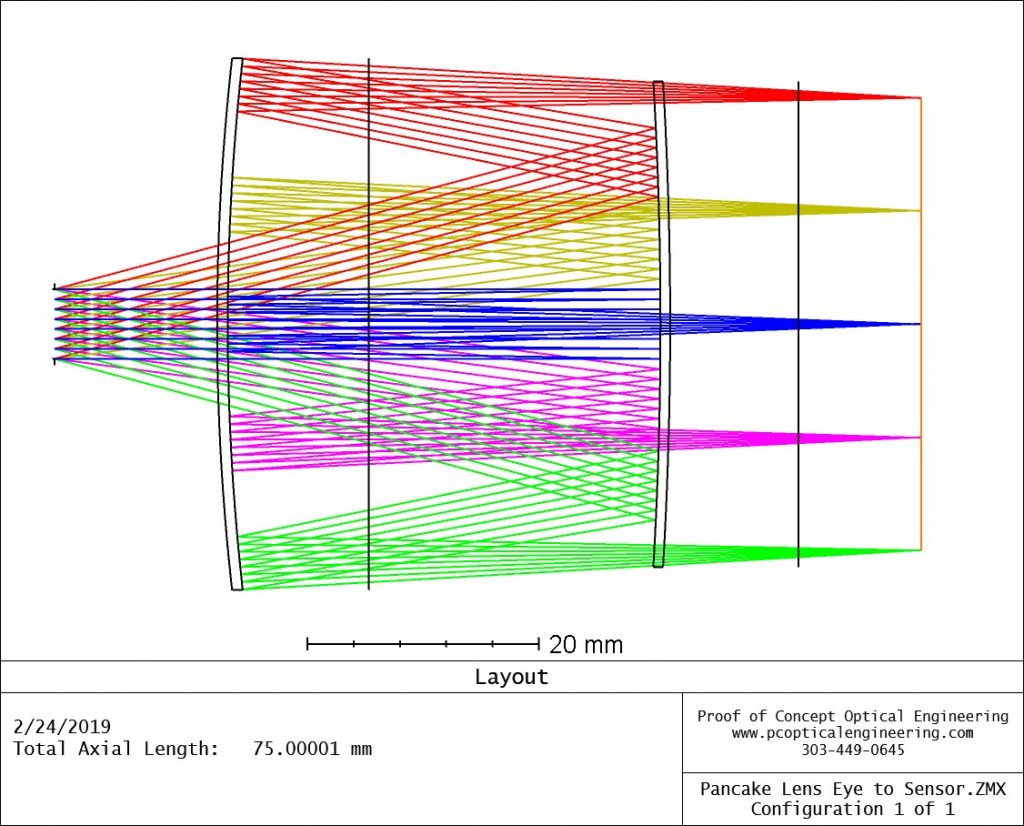Polarizers are used in a wide range of applications that I’ve worked on, including:
- Controlling the direction of light flow as the optical equivalent of an electronic diode (e.g., VR pancake optics)
- Making it possible for transmitted and received rays to share a path without optical cross-contamination (e.g., Tx/Rx isolation in laser communications telescopes)
- Selecting rays on a specified reflective path (e.g., LCoS display optics)
- Enhancing features in imagery (e.g., biological microscopy and remote sensing)
- Controlling the polarization of qubits in quantum computing
While Zemax is an excellent tool for modeling complex systems of polarization optics, it’s important to validate the models with test data. For this purpose, I have a number of high quality polarizing elements in the lab (linear polarizers, retarders, circular polarizers, some specialty polarization optics, and a calibrated power meter).
Polarization-based VR Optics
Polarization-based pancake lenses are used in some of the newer VR headsets, including the Apple Vision Pro and Bigscreen Beyond. They provide a large field of view in a small package, with clarity superior to the Fresnel lenses used in the Oculus Rift and HTC Vive several years ago.
I created the polarization-based “pancake lens” demo below, based on a 2018 Oculus VR patent.
Light from a display is converted from p to circular polarization by a quarter waveplate oriented 45 deg relative to the polarization axis. The light is then transmitted through a partially reflective, curved mirror. A second quarter waveplate converts it from circular to s polarization, which is reflected by a curved polarizer. The light then passes through the waveplate two more times, rotating the polarization to p, which is then transmitted to the eye. The folded design allows for a longer focal length in a smaller package.
Since posting this example, I’ve worked on a couple of these designs and added polarization testing capabilities to my lab.
